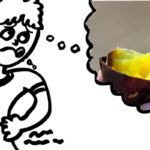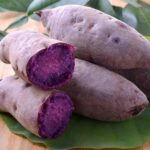Sweet potatoes are a delicious and healthy treat, and one of the most popular ways to prepare them is by boiling. This method ensures the sweet potato becomes soft and tender, with a sweet and sticky texture that is appealing to both adults and children.
While boiling sweet potatoes is not a difficult task, it can be tricky to get right. Overcooked sweet potatoes can become mushy and bland, so it is important to know the correct technique. Seasoned sweet potato vendors share their secrets to perfectly boiled sweet potatoes, ensuring they are fluffy and sweet as candy. The key to their success? Sun-drying the sweet potatoes before boiling.

Why Sun-Dry Sweet Potatoes Before Boiling/Steaming?
Sun-drying sweet potatoes before cooking is a crucial step. Exposing the potatoes to sunlight helps reduce their moisture content, preventing mold and rot. Additionally, the sun’s rays cause a conversion of starch to various types of sugars, making the sweet potatoes softer and sweeter.
Don’t forget to prick the sweet potatoes with a fork or create small holes on their surface. This allows heat to penetrate faster and ensures even cooking, resulting in softer and more fragrant sweet potatoes.

How to Boil Sweet Potatoes
Selecting Sweet Potatoes
When it comes to sweet potatoes, there are various types to choose from, but the most common varieties are those with yellow or white flesh. Many people prefer the yellow-fleshed sweet potatoes, believing they are sweeter and more aromatic.
However, white-fleshed sweet potatoes should not be overlooked. They, too, have a high starch content and are soft and exceptionally sweet.
When purchasing sweet potatoes, look for intact ones without cracks or chips. The ideal sweet potato should feel heavy for its size and firm to the touch, with no signs of bruising.
Opt for sweet potatoes that are round or oval-shaped, without any indentations or narrow waists. These tend to have less fiber and more starch, resulting in a sweeter taste.
Avoid small, long, or narrow sweet potatoes as they tend to be fibrous. Also, be cautious of sweet potatoes with black spots or a rippled appearance, as these are signs of decay.
Sun-Drying
Once you’ve selected your sweet potatoes, it’s time to sun-dry them. Place them in a well-ventilated area for a few days to allow excess moisture to evaporate. This process intensifies their sweetness, ensuring a more delightful taste experience when boiled.

Washing and Preparing
After sun-drying, give your sweet potatoes a thorough wash. Cut off both ends of the potatoes, as these tend to be fibrous and less tasty. Prick the surface of the sweet potatoes with a toothpick or create small holes with a fork.
Boiling/Steaming
Fill a pot with water and bring it to a rolling boil. Place a steamer basket inside and carefully arrange the sweet potatoes in it. Cover and steam for about 20 minutes, or until the sweet potatoes are tender.
It is important to wait for the water to boil before adding the sweet potatoes. This ensures that the potato skins heat up quickly, preventing excessive water absorption and accelerating the conversion of starch to sugar.
Serving
Enjoy your boiled sweet potatoes hot or let them cool down to room temperature before indulging.
Source: Xe và thể thao
The Ultimate Guide to Sweet Potato Consumption: Avoiding Common Pitfalls for Optimal Nutrition
Sweet potatoes are a nutritional powerhouse, offering a plethora of health benefits. They are an excellent source of dietary fiber, promoting healthy digestion and supporting weight loss. With their impressive nutritional profile, sweet potatoes are a valuable addition to any diet, but it’s important to understand how to prepare and consume them to maximize their benefits and avoid any potential pitfalls.






































